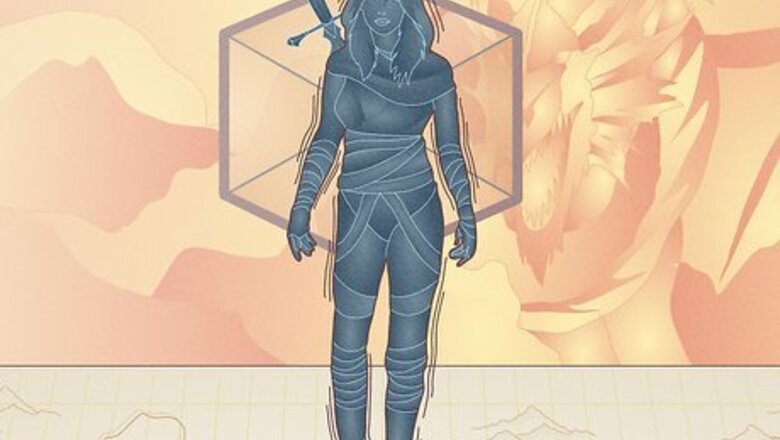
views
- Creatures cannot move when restrained, and their movement speed becomes 0. Additionally, all attacks against them have advantage.
- Restrained creatures also have disadvantage on any attack rolls or Dexterity saving throws (which measure their ability to avoid danger).
- Use an ability check (typically a Strength or athletics check) to end the restrained condition. Otherwise, try using a teleportation spell like Misty Step to escape it.
What is the restrained condition in D&D 5e?
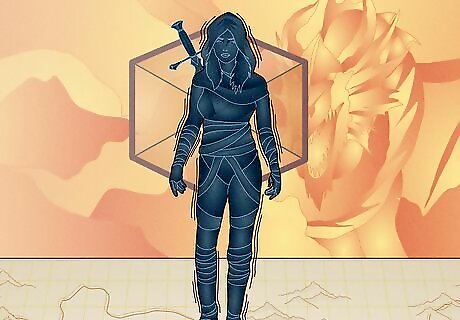
The restrained condition renders creatures unable to move. There are many conditions in D&D 5e, many of which can impair your PC (player character) in some way. “Restrained” is a condition designed to stop your character (or any creature) from moving while also making it more difficult for you to act in combat. Thus, when used strategically, the restrained condition can easily turn the tide of a difficult fight! Like all conditions, the restrained condition lasts until it is somehow countered (meaning you find a way to cancel it out). Alternatively, in some cases, the condition lasts until the magical effect causing it (like an enemy’s spell, for example) naturally ends.
How does the restrained condition work?
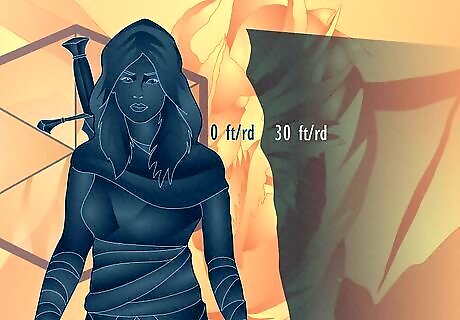
A restrained creature’s movement speed becomes 0. All creatures (including your PC) in D&D 5e have a movement speed, which measures how far they can move (in feet) in a single round. When creatures get restrained, however, they can’t move at all—and, as a result, lose the ability to use their movement speed until the retrained condition goes away. For example, say you created a D&D character with a movement speed of 30 feet per round. Every time it’s your turn to act in combat, you can choose to move your PC up to 30 feet. However, if an enemy spellcaster successfully cast Snare on your PC and gave them the restrained condition, their movement speed would become 0 (meaning they can’t move) for the duration of that spell.

Attackers have advantage against restrained creatures. Because a restrained creature can’t move, it’s naturally easier to hit them with both weapon and spell attack. Mechanically, any attack roll against a restrained creature has advantage—and “advantage” basically means rolling 2d20 (20-sided dice) instead of 1 and taking the higher number for the attack roll, increasing the chances of a successful hit. For example: say your PC is restrained, and a vindictive foe tries to attack them with a sword. On a normal attack, your DM would have to roll 1d20 and add the enemy’s ability modifier (which impacts their chances of making attacks) to that roll. However, with advantage, your DM can instead roll 2d20, take the higher result, and add the enemy’s ability modifier to that. So, if your DM rolled a 5 first and a 15 next, they could take the 15 for their attack roll—making a successful hit much more likely.
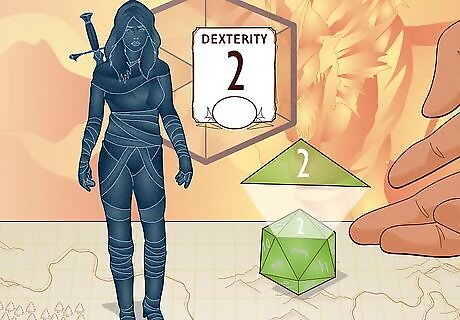
Restrained creatures have disadvantage on attacks and DEX saves. Lack of movement makes it difficult to do just about anything effectively—so, mechanically, restrained creatures have to make all their attack rolls and DEX saves (Dexterity saving throws) with disadvantage. Disadvantage simply means rolling 2d20 for an attack, ability check, or saving throw and taking the lower roll, reducing your chances of success. You get to make attack rolls, which determine whether an attack succeeds, whenever your PC attacks with a physical weapon or a spell that allows them. Dexterity is one of 6 ability scores (along with Intelligence, Wisdom, Charisma, Strength, and Constitution) all creatures in D&D have, and it measures their agility. Therefore, DEX saves measure your PC’s ability to dodge an incoming threat, such as an area effect spell. If they’re restrained, it’s harder to successfully dodge those threats. Say your PC is restrained, and an enemy wizard casts a Fireball spell in their area. You’d have to make a DEX save with disadvantage to try and dodge the fiery blast. You might roll 2d20 and get a 15 first (which is a pretty good roll) and a 2 next (which is very low). Since 2 is the lower roll, you’d have to use that for the DEX save, lowering your character’s chances of success.

Your character can still attack and cast spells while restrained. Don’t assume your PC is helpless just because they’re restrained! You might have disadvantage at times, but you’re absolutely able to take turns in combat. Furthermore, there’s nothing in the rules saying you can’t attack enemies with both weapons and spells—particularly area-of-effect spells, which don’t impose disadvantage because they don’t require attack rolls. For example, if you want your PC to shoot an arrow at an enemy or slash them with a dagger, you can do it—but it’ll be at disadvantage. If you want to hit an enemy with a spell requiring an attack roll, like Guiding Bolt or Eldritch Blast, you would also have to do it at disadvantage. However, if you want to cast a spell like Burning Hands or Ice Storm (which both require making a Dexterity saving throw to avoid), you could do it without any negative effects.
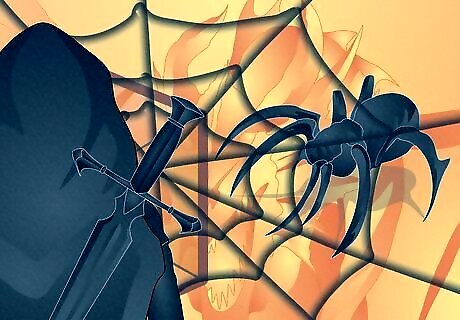
Some monsters have the natural ability to restrain creatures. Typically, creatures get restrained as the result of a particular spell effect or tool (like rope). However, some monsters that you might encounter (and fight) over the course of your D&D campaign have innate abilities that allow them to restrain creatures in combat. So, be prepared to dodge out of the way if you spot any of the following monsters: Giant spiders create webs that trap and restrain their prey. Ropers (monstrosities that take the appearance of stalactites) have tendrils that constrict and restrain unsuspecting creatures. Medusas have a Petrifying Gaze ability that, when successful, first restrains creatures and eventually petrifies them. Giant crocodiles have a bite powerful enough to hold enemies in place, effectively restraining them.
Ways to Cause the Restrained Condition
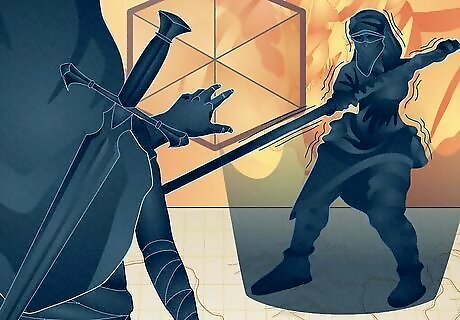
Grappler feat In D&D 5e, you can choose to give your character a new feat (which is essentially an extra, optional ability) at certain times when they level up. The Grappler feat gives your PC advantage on any athletics checks made to grapple another creature and lets you attempt to restrain any creature your PC successfully grapples. Grappling a target effectively stops them from moving. So, restraining an enemy directly after a grapple would then impose disadvantage on their attacks and DEX saves, plus advantage on attacks against them, in addition to the limited movement.

Rope Don’t overthink! If you want to restrain your enemies while playing D&D 5e, sometimes the best way to do it is with a length of rope. The rules for rope in 5e state that a tied-up creature can break free of their binds with a DC (difficulty class) 17 athletics check, which in turn means that you can theoretically restrain any creature using a rope with an escape DC of 17.

Net Did you know that a net is the only nonmagical item in D&D 5e that explicitly allows you to impose the restrained condition on other creatures? It doesn’t have many uses, and the DC to escape a net is 10 (which is relatively low), but a large or smaller creature can nonetheless be restrained using a net—so consider keeping one on hand during your adventures, just in case! Every creature in D&D 5e is classified by size, from “tiny” to “gargantuan.” The fact that nets restrain large or smaller creatures simply means that any creature classified as “large,” “medium,” “small,” or “tiny” are vulnerable to nets.
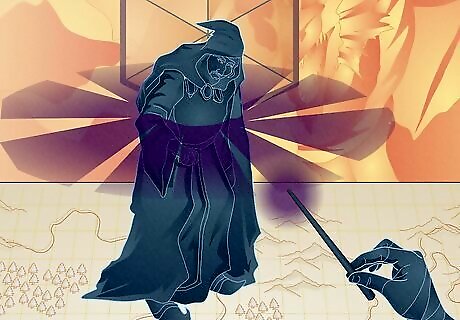
Magical items Over the course of your adventures, you might come across any number of magical items (at your DM’s discretion). Luckily, some magic items are capable of producing effects that impose the restrained condition—so you’re able to use them to ensnare your enemies. Keep an eye out for magical items such as: Rope of entanglement. Use this rope to magically restrain a creature within 20 feet of your PC. Iron bands of binding. This item can magically restrain a huge or smaller creature within 60 feet of your PC. Wand of viscid globs. This wand produces globs of viscous material that attach to targets and restrain them for up to 1 hour.
Which spells cause the restrained condition?

Entangle Use Entangle to force your target to make a Strength saving throw (which measures a creature’s ability to withstand forces that can physically move them) or be restrained by grasping, tangled plants until the end of the spell. Note that creatures restrained by the plants can still make Strength checks on future turns to try and break free! Spell level: 1 Available to: Druids

Ensnaring Strike When you hit a creature with this spell, they become tied up and restrained by magical vines until the end of the spell (which lasts up to 1 minute long). Restrained creatures also take damage from the vines, though they can attempt to break free with a Strength check. Spell level: 1 Available to: Rangers

Snare This spell creates a magical trap. When triggered, the trap restrains all creatures within its 5-foot radius, though they can also make Dexterity saving throws to attempt to avoid it. Alternatively, the snare can be disarmed with an arcana check (which measures a creature’s knowledge of arcane magic). Spell level: 1 Available to: Artificers, druids, rangers, and wizards
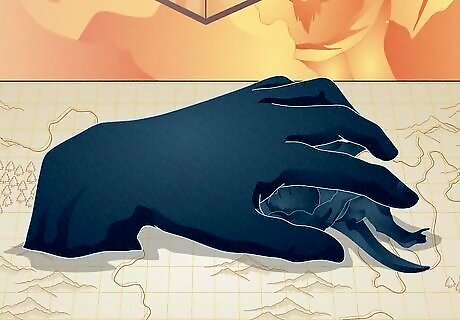
Maximillian’s Earthen Grasp When you cast this spell, you force your target to make a Strength saving throw—and, if they fail, they take damage (meaning they lose hit points) and become restrained for the duration of the spell. Your target can also make Strength checks on their turns to try and break free of the spell. Spell level: 2 Available to: Sorcerers and wizards

Web Act like a spider! Casting web creates thick, sticky webs that catch creatures, forcing them to make a Strength check—and, if they fail, they become restrained by the webs. However, the webs can be destroyed or burned away with fire, and if they’re destroyed, your target becomes free once more. Spell level: 2 Available to: Artificers, sorcerers, and wizards
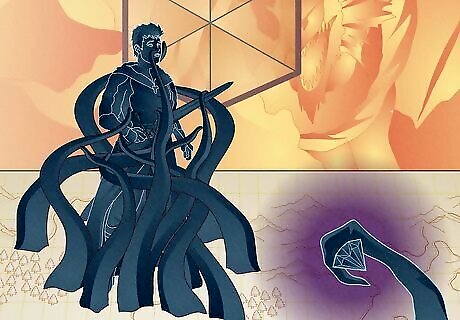
Evard’s Black Tentacles When you cast this spell, creatures within a 20-foot square have to make Dexterity saving throws—and on a failure, they take bludgeoning damage and become restrained by the magical tentacles you summon. On future turns restrained creatures can use their action to try and free themselves with a Strength or Dexterity check. Spell level: 4 Available to: Wizards
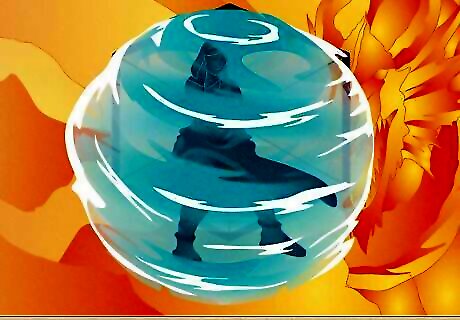
Watery Sphere You create a sphere of water that surrounds and restrains any creature within a 5-foot radius. Creatures caught in the sphere can make a Strength saving throw to try and get out of it. Keep in mind that you can only restrain up to 4 medium (or smaller) creatures in the sphere or 1 large creature. Spell level: 4 Available to: Druids, sorcerers, and wizards
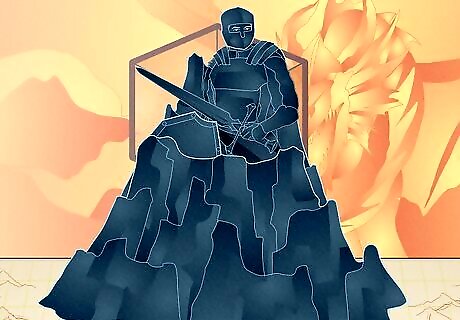
Transmute Rock When you use the Transmute Rock spell, choose to either transform rocks into mud or do the reverse and transform mud into solid rock. Either form of the spell causes targeted creatures to be restrained (either by the sticky mud or the newly hardened rock around them), so it’s up to you which version of the spell you use. Spell level: 5 Available to: Artificers, druids, and wizards

Wrath of Nature There are several possible effects to choose from when casting Wrath of Nature. Choose the “Roots and Vines” option to restrain a single creature of your choice and force them to make a Strength saving throw or be trapped for the duration of the spell. Spell level: 5 Available to: Druids and rangers

Bones of the Earth When you cast this spell, you cause pillars to stone to erupt from the ground—and possibly restrain creatures that get caught between a pillar and another object. Restrained creatures can attempt to escape from your spell using a Strength or Dexterity check. Spell level: 6 Available to: Druids

Flesh to Stone Choose a target for this spell. If they fail a Constitution saving throw (which measures a creature’s ability to withstand pain, fatigue, and other physical effects), your target becomes restrained as their body starts turning to stone—although they need to fail 2 more saving throws (3 in total) to turn to stone entirely. Spell level: 6 Available to: Warlocks and wizards

Prismatic Spray and Prismatic Wall Prismatic Spray produces 8 multicolored rays of light, each with a different effect—and the indigo light is capable of restraining targets that fail a Constitution saving throw. Similarly, Prismatic Wall (which creates a wall comprised of 7 layers, each a different color of light) also has an indigo light that restrains creatures. Spell level: 7 (Prismatic Spray) and 9 (Prismatic Wall) Available to: Sorcerers (Prismatic Spray only) and wizards (both)
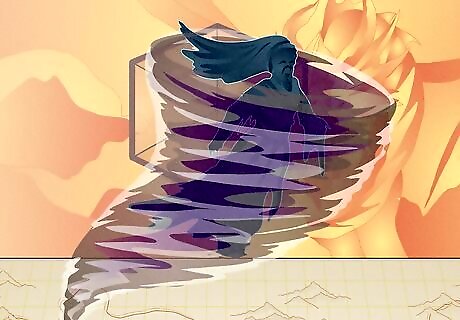
Whirlwind True to its name, this spell creates a whirlwind capable of trapping and restraining creatures caught in it. Any creature that succeeds on a Strength saving throw can escape the whirlwind; otherwise, they’re stuck until the spell ends. Spell level: 7 Available to: Druids, sorcerers, and wizards
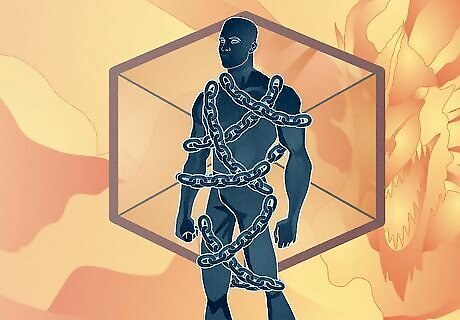
Imprisonment As a level 9 spell (the most powerful spell tier available in 5e), Imprisonment allows you to essentially restrain a target indefinitely. When you choose the “Chaining” option (meaning that your target gets magically chained in place), they’re considered restrained until the spell is removed—so, if you never choose to remove it, they’re stuck permanently. Spell level: 9 Available to: Warlocks and wizards
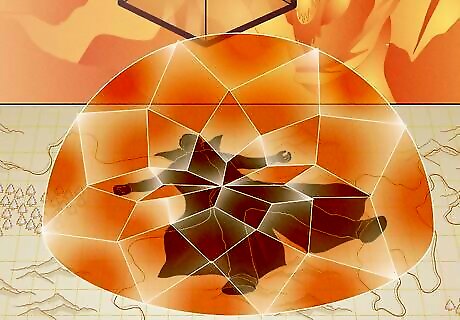
Ravenous Void This spell creates a sphere of destructive gravitational force, and creatures that enter the sphere may take damage and become restrained if they fail a Strength saving throw. However, trapped creatures may continue making saving throws to try and escape the sphere. Spell level: 9 Available to: Wizards (specifically wizards specializing in graviturgy, which is a kind of magic featured in the Explorer’s Guide to Wildemount sourcebook)
Ways to Escape Being Restrained
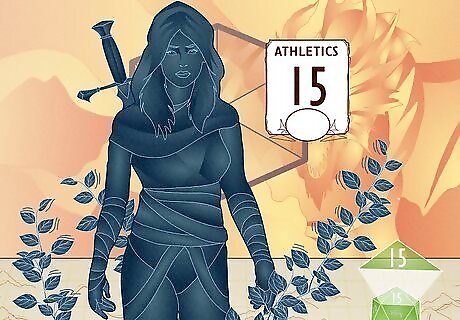
Ability checks If your character gets restrained, your DM will likely let you make an ability check to try and free them. Nearly all restrained effects in 5e have a DC (difficulty class) attached to them—and, to escape the restrained condition, you need to make an ability check that is higher than the DC. Athletics checks (which measure a PC’s strength and athleticism) are most commonly used for escaping the restrained condition. For example, if your PC gets retrained, your DM might tell you to make an athletics check to try and free your PC on their next turn in combat. If the DC to escape is 15, that means you would need to roll an athletics check of 15 or higher to successfully counter the restrained condition affecting your character.

Teleportation If you’re playing a spellcaster character, one of the quickest and easiest ways to escape the restrained condition is simply to teleport somewhere else! Consider keeping a minor teleportation spell like Misty Step (which transports your PC 30 feet away) or Dimension Door (which can move them up to 500 feet away) prepared so your character always has a quick escape if they get restrained. For example, say your character gets caught in a giant spider’s web. If you have them quickly cast Misty Step, your PC could teleport to a space with no webs to restrain them!
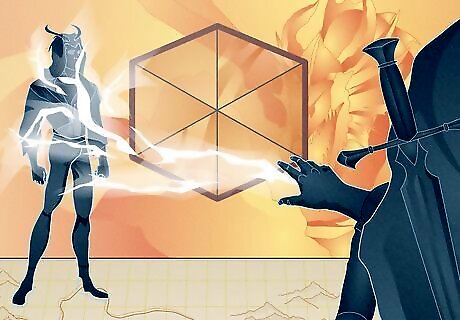
Destructive spells If a creature is directly restraining your PC, try breaking their hold with a destructive spell that forcibly moves the creature away from you. For example, the Thunderwave spell pushes creatures up to 10 feet away from you, and the Gust cantrip pushes them 5 feet away. Telekinesis also has the ability to move creatures 30 feet in any direction. Look for similar useful spells on your PC’s spell list! Additionally, with an enchantment spell like Compulsion or Command, you can order a creature to move away from you instead.
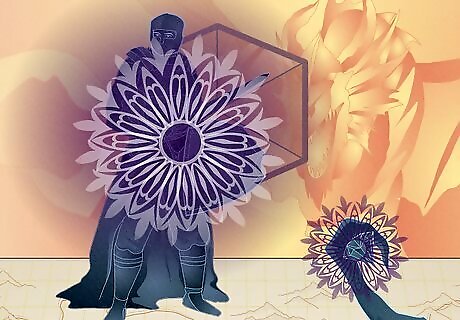
Incapacitated condition In D&D 5e, having the “incapacitated” condition basically means being totally unconscious—and an unconscious enemy can’t keep your PC restrained. So, if all else fails, try to incapacitate an enemy that’s restraining you! Render them unconscious by damaging them until they fall to 0 hit points, or use an ability to stun them or make them fall asleep. Hit points measure the amount of health and vitality a creature has. When a creature loses all hit points and gets to 0, they automatically fall unconscious. The Sleep spell forces creatures to fall asleep, which also effectively makes them incapacitated and unable to restrain your PC. Several abilities stun (and therefore incapacitate) enemies, including: Stunning strike (a monk ability) Contagion (a 5th-level cleric and druid spell) Symbol Stun (a 7th-level bard, cleric, druid, and wizard spell) Divine Word (a 7th-level cleric spell) Power Word Stun (an 8th-level bard, sorcerer, warlock, and wizard spell) Psychic Scream (a 9th-level bard, sorcerer, warlock, and wizard spell)
















Comments
0 comment